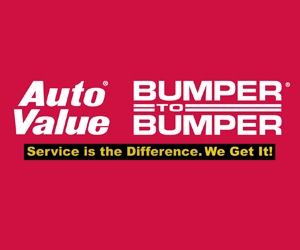Dragstrip Prep at Mason Dixon Dragway
Instrumented acceleration tests have been a staple of MotorWeek reviews since our beginnings. But, for a true test of a vehicle’s performance potential, nothing beats a fully-prepped drag strip. Fortunately, our home venue Mason-Dixon Dragway fits that bill perfectly. And since our “Over the Edge” guy Greg Carloss has taken more passes there than anyone else, we thought it was about time he put in the prep work.
GREG CARLOSS: I’m here at Mason-Dixon Dragway so much, it’s kind of like my second home, and homes need maintenance. And with race season starting, it’s time for a little spring cleaning. So, Jake, where do we start?
JAKE LANDES: Well we can start with you moving out of the way.
GREG CARLOSS: That’s a good point!

If you’ve ever been to a drag strip or even just watched our acceleration tests, you’ll notice the track looks like it’s covered in tar. Well it’s actually rubber, and it’s not just leftovers from years of burnouts. Instead, it’s sprayed onto the surface as a grippy base layer, and here it’s maintained by General Manager, Jake Landes.
JAKE LANDES: Me and my partner have been doing this, we started about 12 years ago. We’ve upgraded, definitely in equipment over the years. But it [was] a lot of trial and error, a lot of research to see what other tracks are doing, what bigger tracks are doing, what NHRA may be doing, to try and be competitive with tracks that are in the area and around us.
GREG CARLOSS: Jake hasn’t touched the track at all this off-season, so the plan today is to get it ready for the year’s first test and tune.
JAKE LANDES: We’ll start out with scraping, then we will put down a rosin. After that we’ll run the drag. After that we will take the sprayer, spray traction compound. Then we’ll run the drag down a few more times, and after that it’s kind of rinse and repeat. During the racing season, we’ll do this every day that we’re open.
GREG CARLOSS: As the new guy, my job is to man the hand-scraper and avoid being set on fire by this 1-million BTU torch, which softens the rubber so it scrapes up like butter.
Just pull it straight like this? Oh yeah, that’s a good one. That’s good stuff. I kind of want to eat it.
While I goof off, Jake stays focused, making consistent overlapping passes as my man, Bub, follows behind laying down the rosin which acts as a protective barrier. Lane two is in good shape, but lane one needs a little spot rubber repair.
So, I think, considering I probably did this, I guess it’s only fair that I help out.
Laying over this rubber is a lot like spackling drywall, which I’m also not very good at. Jake, on the other hand, makes it look easy.
Next, it’s time to drag.
Mind if I take a ride?
BUB: Nope. Come on in.

GREG CARLOSS: The purpose of dragging the track with used racing slicks is to tighten up the rubber and activate the traction compound that’s already out there. In other words, it wakes up the track surface. And if the friction doesn’t do it, the squealing certainly will.
How much weight do you put out back there?
BUB: Well, that box is made out of three-quarter-inch plated steel so that box is well over a ton. And then we got a 55-gallon barrel full of water on top of that.
GREG CARLOSS: Shew!
After just a couple passes on one lane the drag tires have to be rotated, and on a typical race day, Bub will wear out a full set. Once the track is wide awake, it’s time to spray the sticky stuff.
And how much…you got, what, like three kegs worth of, I guess that’s track compound, is that what it is? Glue?
JAKE LANDES: Yeah it is. Three kegs on this one, with 15 gallons each with traction compound. We can spray the whole track once with 15 gallons.
GREG CARLOSS: The traction compound is as expensive as it is sticky. So, one time up and one time back is plenty.
This is how I’m used to it sounding.
JAKE LANDES: This is one application of the traction compound.
GREG CARLOSS: How long do you guess that you could stand here before it’s pulling the shoes off your feet.
JAKE LANDES: Sometimes during events somebody will come up with not tied shoes or loosely tied shoes and they literally step on it and walk right out of it.
GREG CARLOSS: We let the compound rest for a few minutes before giving it another drag. If the conditions call for it, the spraying and dragging can happen a few more times, but for the weekend’s test and tune, this lane is in good shape. Which means, it’s quittin’ time… for me at least.
Well I hope I wasn’t too much of a hindrance for you, and I appreciate you having me out here and hopefully I can help you again.
JAKE LANDES: Anytime.
GREG CARLOSS: Alright. Well, I’m gonna try to get out of here, alright?
JAKE LANDES: Alright.



















